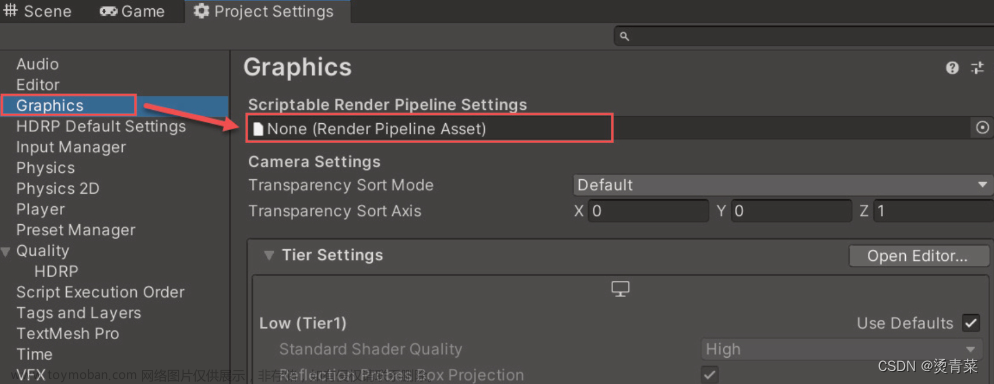最近在了解字体渲染的一些东西,其中不可避免的需要到这两个库。现在写个入门示例记录一下。
一、FreeType和HarfBuzz介绍
1.1 FreeType
FreeType 是一个开源的字体引擎,它提供了一套用于渲染字体的 API。FreeType 支持多种字体格式,包括 TrueType、Type 1、CFF、OpenType、SFNT、PCF、BDF、FNT 等。
FreeType 下载地址:https://freetype.org/download.html
FreeType 的主要功能包括:
- 加载字体文件:FreeType 可以加载各种格式的字体文件,并提取其中的字形数据。
- 渲染字形:FreeType 可以将字形数据渲染为位图,用于在屏幕或其他设备上显示。
- 提取字体信息:FreeType 可以提取字体文件中的各种信息,如字体名称、作者、版权信息等。
FreeType 是用 C 语言编写的,可以在多种操作系统和平台上运行,包括 Windows、macOS、Linux、iOS、Android 等。
1.2 HarfBuzz
HarfBuzz 是一个开源的文本排版引擎,它主要用于处理 Unicode 文本的复杂脚本和字形。
HarfBuzz 下载地址:https://github.com/harfbuzz/harfbuzz
HarfBuzz 的主要功能包括:
- 字形形状:HarfBuzz 可以将 Unicode 文本转换为字形索引和位置信息,这是在屏幕上显示文本的基础。
- 文本方向:HarfBuzz 可以处理从左到右(LTR)和从右到左(RTL)的文本,以及垂直排版的文本。
- 复杂脚本:HarfBuzz 支持全球各种语言的复杂脚本,包括阿拉伯语、印地语、泰语、藏语等。
- OpenType 特性:HarfBuzz 支持 OpenType 字体的各种特性,如连字、变体、上标、下标等。
HarfBuzz 是用 C 和 C++ 语言编写的,可以在多种操作系统和平台上运行,包括 Windows、macOS、Linux、iOS、Android 等。HarfBuzz 是许多开源和商业软件的核心组件,包括 Chrome、Firefox、Android、LibreOffice 等。
二、FreeType和HarfBuzz的使用
环境:Windows, VSCode, CMake VS2022
工程目录:

CMakeLists.txt 配置:
cmake_minimum_required(VERSION 3.0.0)
project(font_demo VERSION 0.1.0 LANGUAGES C CXX)
add_compile_options(/utf-8)
add_executable(font_demo main.cpp)
add_subdirectory(freetype)
add_subdirectory(harfbuzz)
target_link_libraries(
font_demo
freetype
harfbuzz
)
if(CMAKE_BUILD_TYPE STREQUAL "Debug")
add_definitions(-D_ITERATOR_DEBUG_LEVEL=0)
set(CMAKE_CXX_FLAGS_DEBUG "${CMAKE_CXX_FLAGS_DEBUG} /MD")
else()
set(CMAKE_CXX_FLAGS_RELEASE "${CMAKE_CXX_FLAGS_RELEASE} /MD")
endif()
main.cpp 代码:
// **************************************************************************
// 这个程序演示了如何使用 FreeType 和 HarfBuzz 将文本渲染到位图中。
// 该程序以字符串作为输入,并将每个字符的位图打印到控制台。
// 该程序基于以下示例:
//
// Creation Date: 2024-01-21
// Created By: 又吹风了
#include <iostream>
#include <vector>
#include <cstring>
#include <ft2build.h>
#include FT_FREETYPE_H
#include <hb.h>
#include <hb-ft.h>
int main()
{
// 要显示的文本
std::wstring text = L"Hi,你好";
FT_Library library;
FT_Face face;
// 初始化 FreeType 库
if (FT_Init_FreeType(&library))
{
std::cerr << "could not init freetype library\n";
return 1;
}
// 从字体文件加载字体面
if (FT_New_Face(library, "C:\\Windows\\Fonts\\msyh.ttc", 0, &face))
{
std::cerr << "could not open font\n";
return 1;
}
// 设置字体面的像素大小
FT_Set_Pixel_Sizes(face, 0, 30);
// 为 harfbuzz 创建一个缓冲区
hb_buffer_t *buf = hb_buffer_create();
// 检查错误
if (!buf)
{
std::cerr << "could not create harfbuzz buffer\n";
return 1;
}
// 设置缓冲区的方向为从右到左
// harfbuzz 会根据自动调整文本方向,所以不需要设置
// hb_buffer_set_direction(buf, HB_DIRECTION_RTL);
// 将文本设置到缓冲区
std::vector<uint32_t> utf32_text(text.begin(), text.end());
hb_buffer_add_utf32(buf, utf32_text.data(), text.length(), 0, text.length());
// 创建一个 harfbuzz 字体对象
hb_font_t *hb_font = hb_ft_font_create(face, NULL);
// 检查错误
if (!hb_font)
{
std::cerr << "could not create harfbuzz font\n";
return 1;
}
// 检查文本的方向
hb_direction_t direction = hb_buffer_get_direction(buf);
// 对文本进行形状处理
hb_shape(hb_font, buf, NULL, 0);
// 从缓冲区获取字形信息和位置
unsigned int len = hb_buffer_get_length(buf);
hb_glyph_info_t *info = hb_buffer_get_glyph_infos(buf, NULL);
hb_glyph_position_t *pos = hb_buffer_get_glyph_positions(buf, NULL);
// 存储每个字符的位图
std::vector<std::pair<FT_Bitmap, unsigned char *>> bitmaps;
// 加载文本的每个字符并存储其位图
for (unsigned int i = 0; i < len; ++i)
{
FT_UInt glyph_index;
if (direction == HB_DIRECTION_RTL)
{
// 如果文本的方向是从右到左,那么使用字形索引
glyph_index = info[i].codepoint;
}
else
{
// 如果文本的方向是从左到右,那么使用字符码点
glyph_index = FT_Get_Char_Index(face, info[i].codepoint);
}
if (glyph_index == 0)
{
std::cerr << "Could not find glyph for codepoint=" << info[i].codepoint << "\n";
continue;
}
if (FT_Load_Glyph(face, glyph_index, FT_LOAD_DEFAULT))
{
std::cerr << "Could not load glyph,codepoint=" << info[i].codepoint << ",glyph=" << glyph_index << "'\n";
return 1;
}
FT_Render_Glyph(face->glyph, FT_RENDER_MODE_NORMAL);
FT_Bitmap bitmap_copy;
unsigned char *buffer_copy;
// 复制位图及其缓冲区
bitmap_copy = face->glyph->bitmap;
buffer_copy = new unsigned char[bitmap_copy.rows * bitmap_copy.width];
std::memcpy(buffer_copy, bitmap_copy.buffer, bitmap_copy.rows * bitmap_copy.width);
bitmap_copy.buffer = buffer_copy;
// 存储复制的位图及其缓冲区
bitmaps.push_back(std::make_pair(bitmap_copy, buffer_copy));
}
int max_rows = 0;
// 找到最大的行数
for (const auto &pair : bitmaps)
if (pair.first.rows > max_rows)
max_rows = pair.first.rows;
// 打印每个字符的位图
for (int y = 0; y < max_rows; ++y)
{
for (const auto &pair : bitmaps)
{
for (int x = 0; x < pair.first.width; ++x)
{
if (y < pair.first.rows && pair.first.buffer[y * pair.first.width + x])
std::cout << "*";
else
std::cout << " ";
}
std::cout << " "; // 字符之间的间距
}
std::cout << "\n";
}
// 释放位图的缓冲区
for (auto &pair : bitmaps)
delete[] pair.second;
// 释放 harfbuzz 的缓冲区和字体
hb_buffer_destroy(buf);
hb_font_destroy(hb_font);
// 释放 FreeType 的字体和库
FT_Done_Face(face);
FT_Done_FreeType(library);
return 0;
}显示效果:
注意:这是只是简单打印bitmap,没有考虑基线、行高、字距等排版问题。
阿拉伯语


.文章来源地址https://www.toymoban.com/news/detail-810961.html
.文章来源:https://www.toymoban.com/news/detail-810961.html
.
到了这里,关于FreeType和HarfBuzz入门示例的文章就介绍完了。如果您还想了解更多内容,请在右上角搜索TOY模板网以前的文章或继续浏览下面的相关文章,希望大家以后多多支持TOY模板网!











